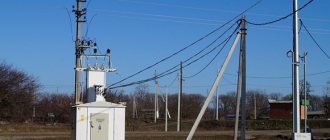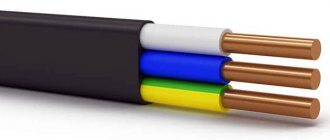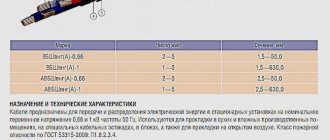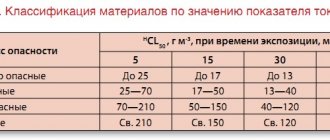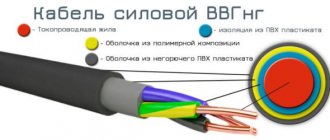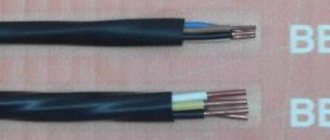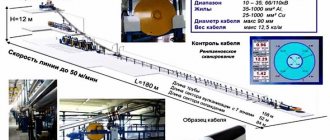How to spell it correctly - cables or cables
In all dictionaries, when deciphering the definition of a term, it is indicated that in the singular and plural, the stress in the word “cable” always falls on the first syllable. This means that the correct spelling and pronunciation will be: connection cables, power cables, cable guides, cable markings or distance between cables.
Important: The definitions of “wire” and “cable,” at first glance, may seem synonymous, but this is not entirely true, and there are some differences between the two concepts.
What is a cable?
Are there really those who don’t know what an electric power cable is? First of all, it is a conductor that is hermetically sealed with a sheath. This design is used everywhere:
- for transmitting electric current;
- when transmitting information;
- for fixation during installation of construction or other equipment.
Foreigners studying the Russian language also get confused in the designations because the word “cable” is used to designate all types of wires and wire connections.
This word is spoken by foremen and workers when they are laying a trench and pulling huge coils of cable. When repairing a computer, it refers to various wired and wireless connections.
“Hang the cord,” you can hear in the courtyards; women often use a convenient cord to hang their laundry after washing.
What is cable and wire
A wire is a single conductor without any insulation layer. It can also be one, two or more wires, depending on the number of phases on the conductor. Metal cores are covered with shells of dielectric, fibrous material in the form of winding or weaving. This depends on the conditions in which the wire will be installed and operated. Also, conductors may be bare or have insulation. They are used when installing power lines, motor windings, connecting electronic equipment, etc.
Bare wires do not have protective or insulating layers and are mainly used for cable lines.
Important! The cores of the products, which have insulation, are covered with rubber or polymer sheaths.
Wires are classified mainly depending on whether they have protective elements or not:
- They can be protected with a special layer, which is designed to prevent external influences. It sits on top of an insulating layer and is often called armor.
- Unprotected wires do not have such a protective sheath.
Depending on the purpose of use, conductors can be:
- Assembly. Serve for permanent installation in a panel or panel. When connecting electrical equipment, the current-carrying conductor is most often made of copper.
- Power. They are used for installation of main electrical wiring, as well as for connecting electrical equipment units. Can be located both indoors and outdoors.
Important! A cable is a combination of one or more conductive cores, covered with individual insulation and enclosed in a common sealed sheath (lead, aluminum, rubber or plastic). Depending on the installation and operating conditions, an armored shell (a strip of steel or other metal with a special coating) can be additionally used around the polymer. This type is called armored, but, in the absence of risks of mechanical damage, ordinary types of conductive devices are used in everyday life.
Meaning of the word cable
(from Dutch kabel ≈ rope, cable) electrical, one or more insulated conductors enclosed in a hermetic sheath, on top of which, as a rule, protective covers are applied. Communications are used to transmit electrical energy or signals over a distance (high-voltage power lines, power supply to industrial enterprises, transport, and public utilities; trunk communication lines, city telephone network, radio communications and television; power supply to moving working machines - excavators, loggers, and peat miners machines, etc.; electrical equipment of ships, aircraft, etc.). The design of a cable depends significantly on the conditions of its installation and operation (underground, in water, in air, in chemically active environments, at low or high temperatures, at high humidity, etc.).
Cables of all types have common structural elements: conductive cores, insulation and sheath. Current-carrying conductors are made of copper or aluminum, which have the lowest (after silver) electrical resistance (resistivity of electrical copper r = 1.7 × 10-8 ohm × m, aluminum r = 2.9 × 10 8 ohm × m). Depending on operating conditions, current-carrying conductors can have varying degrees of flexibility, be single-wire or twisted from many wires. In power cables, current-carrying conductors are standardized by cross-section, the choice of which depends on the transmitted power. In the USSR, the most common sections are: 10, 16, 25, 35, 50, 70, 95, 120 and 150 mm2. In communication cables, current-carrying conductors are standardized by diameter.
K. insulation is made of solid, layered, or frame-air dielectric, separating the conductors from each other and from the shell. In stranded cables, the twisted insulated conductors are additionally covered with insulation (belt), usually made of the same material as the main one; The waist insulation serves as a bandage, giving the K. a round shape. Insulating materials must have high electrical resistance and the electrical strength required by operating conditions with the smallest possible thickness, as well as low dielectric losses (tgd), minimal dielectric constant (e) and high resistance to aging. Depending on the operating conditions, additional requirements may be imposed on the insulation: non-flammability, increased flexibility, moisture resistance, etc. Of particular importance is the heat resistance of the insulation, i.e. the ability to withstand elevated temperatures without significantly reducing operational reliability, since the upper limit of the operating temperature increases allows you to reduce the dimensions and weight of the cable. The most common insulation materials are cable and telephone paper, rubbers based on natural and synthetic rubbers, and plastics (polyethylene of various modifications, polyvinyl chloride, polystyrene, etc.). The insulation composition may include mineral oils and oil-rosin compositions, as well as some inert gases under pressure.
Shells in the form of solid pipes over insulated conductive cores serve to protect them from mechanical damage, exposure to moisture, light, and chemicals. For K., with easily moistened (hygroscopic) insulation, it is preferable to use a shell made of lead or aluminum - materials with a diffusion constant close to zero. Lead shells are easily formed at relatively low temperatures (180≈220 ╟C) and, despite many disadvantages: high density (11.4 g/cm3), harmful to process, low vibration resistance and mechanical strength, they are widely used in the manufacture of lead shells. More Aluminum, which is 2≈2.5 times stronger and 3.3 times lighter than lead, is more vibration-resistant and less scarce, is promising for these purposes. However, pressing aluminum requires more complex equipment, since its plastic deformation requires significant effort even at a temperature of 450≈500 ╟C. To increase flexibility, aluminum shells of large diameters are corrugated. K. with continuous plastic insulation usually have shells made of various polyvinyl chlorides and soot-pigmented (1≈2%) polyethylene (the moisture permeability of polyvinyl chlorides is 10 times higher than that of polyethylene). Rubber-insulated casings, as a rule, have a shell based on various synthetic rubbers, which give them oil-oil resistance, inflammability, increased frost resistance, flexibility, and mechanical strength.
To protect shells from mechanical damage and corrosion, protective covers are applied to them, which in most cases include armored covers (armor). Most often, the armor is made of two steel strips 0.3≈0.8 mm thick, sometimes with a zinc or bitumen coating, which reliably protect the cable from damage when laid in the ground, indoors, in channels, blocks, and tunnels. To protect the cable from the effects of significant tensile forces, it is covered with armor made of round (less often flat) galvanized steel wires with a diameter of 1.4 to 6 mm (mandatory when laying along the bottom of reservoirs, in boreholes, etc.). Soft covers made of several layers of bitumen, impregnated paper tape or cable yarn (jute) are applied under the armor and on top of it. Circuits laid in particularly aggressive environments, in the ground in the presence of stray currents, as well as all circuits with an aluminum shell, regardless of their operating conditions, are protected with reinforced covers, which include a plastic coating - tape or solid. When laying in mines or fire-hazardous areas, cables are protected with non-flammable covers (for example, glass yarn, coal tar pitch). To protect the wire from minor mechanical damage, a shell made of galvanized steel wires with a diameter of up to 0.3 mm or a braid made of fibrous materials impregnated with anti-rot compounds is used.
More than 1,000 types of K. are produced in the USSR, the markings, assortment, purpose, design and characteristics of which are given in the relevant standards. For planning and organizing production, a detailed classification of products into groups has been adopted, taking into account the commonality of technological processes. On its basis, the specialization of factories and workshops for the production of conductors is carried out. Usually, conductors have a letter designation (brand) indicating the number, cross-section, or diameter of the current-carrying conductors (see table). Some cables additionally indicate the value of the most important characteristic (operating voltage, nominal impedance, etc.) or a characteristic design feature (type and number of coaxial pairs, double or quadruple twisting, etc.). The letters usually indicate the name of the metal of the conductor, the sheath and insulation material, the presence and type of protective covers and armor, often the area of application (control, ship, for signaling and interlocking, installation, etc.). For example, ASK 3`95≈6 ≈ power cable (implied) three-core, with aluminum conductors with a cross-section of 95 mm; in a lead sheath, armored with round steel wires with reinforced protective outer covers, for a rated voltage of 6 kV: TPVBG 100`2`0.5 ≈ telephone cable with polyethylene insulation, in a polyvinyl chloride sheath, armored with steel tapes with an anti-corrosion coating, 100 pairs with a diameter of copper wires of 0.5 mm.
In Fig. provides information about the most commonly used in various fields of technology, indicating the main brands of each type, design characteristics, main parameters, installation conditions, operation, primary area of application, as well as schematic cross-sections of the K.
Lit.: Bragin S. M., Electrical and thermal calculation of cables, M. ≈ L., 1960; Bachelis D.S., Belorussov N.I., Sahakyan A, E., Electrical cables, wires and cords (Handbook). 2nd ed., M. ≈ Leningrad, 1963; Cables and wires, vol. 1≈3, M. ≈ Leningrad, 1959≈64; Fundamentals of cable technology, M. ≈ L., 1967; Privezentsev V. A., Larina E. T., Power cables and high-voltage cable lines, M., 1970.
V. M. Tretyakov.
Characteristics
For users, the most important design features are the number and cross-section of conductive elements, outer diameter and weight, but this data is not enough for a comparative analysis of cables of different brands. Information about the material, insulation and housing thickness, armor and conductor design can be very useful during installation and operation. By comparing this data from different brands, it is possible not only to evaluate design capabilities from the point of view of working conditions, but also to identify optimal designs.
Open Wiring Table
Also, the following parameters are important:
- Voltage and number of phases in the network.
- Maximum amperage that is safe to operate.
- Maximum possible current power.
Important! These data depend on the cross-section and material from which the cable is made. All data is presented in the tables below:
Homonyms or paronyms
Considering the difference between the words “male” or “cable”, we cannot say that they are homonyms. Homonyms are the same in sound and spelling, but differ only in their semantic (lexical) meaning.
These words differ in both spelling and pronunciation. Moreover, you need to pay attention that in these nouns the stress falls on different syllables: male - cable.
Such words are called paronyms. By the way, this group of words was identified not so long ago for study in schools. Just 10 years ago, only linguists knew what paronyms were.
Ignorance of the lexical interpretation of a word leads to errors in its use not only among foreigners, but also among native speakers.
It is very important, when explaining to young children the correct use of a word, to explain its meaning. This will help the child not to make speech mistakes in the future and not to be ridiculed by peers.
Because of the meaning of the word “male,” parents sometimes, out of false embarrassment, do not
tell the children what its meaning is. And kids, after being ridiculed by more knowledgeable friends, may develop complexes.
In speech, paronyms are used to add credibility to phrases. The stylistic function of expressions helps to convince the opponent and give a certain direction to the proposal. Pop artists and speakers love to use paronyms in their performances.
For example, it is worth giving paronyms:
- Absurdity – absurdity, noun.
- Absurdity – stupid conclusion, noun.
- Guest – visitor, noun.
- Bone is an organic compound, part of the skeleton is a noun.
The first words are confused mainly by adults - it seems to them that they have the same meaning. The second ones are children; similar sounds prevent them from understanding the correct use of words.
How to identify cables and wires
The type and variety of conductor can be recognized from the markings applied to its surface. In the first positions it contains the letters:
- The symbol at the beginning of the inscription indicates the main material of manufacture: A - aluminum, the absence of a letter indicates that the material is copper.
- The second position in the name means the type of product: PP - flat wire, K-control, M - for installation, MG - the same with a flexible core, P (U) or Sh - installation, indicating the material of manufacture.
- The third position reports the insulation material between the cores: B or BP - polyvinyl chloride (PVC), P - polyethylene, P - rubber, H or HP - nayrite (non-flammable rubber).
- The fourth position contains information about the design features of the conductor: A - paved, B - armored tape, G - flexible wire without a protective sheath, K - armored round wire, O - braided, T - gasket in the tube.
In addition to letters, the markings also contain numeric symbols:
- The first is the number of cores.
- The second is the cross-sectional area.
- The third is normal network voltage for safe operation of the product. The absence of the first digit indicates that the cable or wire is single-core. The cross-sectional area of the conductor is standardized and is adopted in accordance with the maximum current strength of the network, the core material and installation conditions.
Important! The power cord must be marked with the letter Ш.
An example of typical cable marking and its explanation:
- PPV 2×1.5–380 – copper wire, with PVC insulation, flat, two-core, cross-sectional area of each core 1.5 mm, permissible voltage 380V.
- VVG 4×2.5–380 – copper cable, PVC insulation, PVC sheath, without additional protective armor, 4 cores in the cross-sectional structure, area of each core 2.5 mm, voltage 380V.
Types of cable
Depending on the purpose of use, cables are divided into several types. Each of them has its own design features.
Power
Such products are used for transmission and distribution of electricity to consumers. They can contain aluminum or copper conductors, as well as woven layers of polyethylene, paper, PVC and rubber. Products are usually supplied with a protective shell.
Tests
They are used to power low voltage equipment and create control lines. The main materials used for the manufacture of cores with a cross section of 0.75 - 10 mm are copper and aluminum.
Managers
Designed for automated systems. Made of copper with a plastic shell. In all cases, they are equipped with a protective shield to prevent damage and electromagnetic interference.
communications communications
They are used exclusively for transmitting high-frequency (long-distance) and low-frequency (local) communication signals.
Radio engineering
Thanks to them, electronic devices can communicate with each other. The product consists of a central copper core and an outer conductor, the insulation is made of PVC or polyethylene.
Cable
In order to understand the difference between a cable and a wire, you need to consider them in detail. We already know what a cable is. For a more detailed study, it’s time to get acquainted with its classification and varieties. First of all, they are divided into application groups:
- power;
- installation;
- communications;
- management;
- radio frequency;
- optical.
Power ones are designed to transmit electricity. They are laid permanently and used when connecting mobile electrical consumers.
The required elements included in the cable are:
- conductor;
- its isolation;
- shell.
Made from copper and aluminum. Supply voltage – up to 750 kV. They have a long service life (30 years). The best insulation is made from cross-linked polyethylene.
Mounting plates are used for inter-device installation of electrical devices. Supply voltage – up to 500 V. The main material of the current-carrying conductors is copper. They have stable performance at elevated temperatures.
Communication cables are used in signaling and wire communications. For example, a corrugated cocoon-shaped waveguide is used in radio engineering and radar systems. Widely used for intercity, interregional and city communications.
Control cables are used for control and lighting circuits in machine tools and other mechanisms with voltages up to 600 V.
RF and optical media transmit energy and signals at specific radio frequencies or in the optical range.
In addition to groups, these electrical conductors have a number of characteristics by which they are classified. This includes parameters such as insulation, shielding, the number of current-carrying cores and their material from which they are made. There are a number of other signs of cable division. The classification of electrical products is described in detail in the ISO 11801 2002 standard.
Cable type
Depending on the conditions in which the conductor will be used, they are also divided into several types.
Assembly
Designed for flexible or fixed installation of electrical panels and switchboards. In addition, they are used in the production of radio and electronic equipment.
Power
They can withstand high voltage, high current and power due to their design features, and are used for laying the main power supply network.
Installation
With their help, the installation of internal and external connections, power transmission systems inside the house is carried out
There is another type of conductor - a cord. It is designed to create movement-free connections. The difference between cords and wires is the density of the core insulation, larger cross-section and power.
A cord is a conductor consisting of two or more insulated flexible conductors with a maximum cross-section of 1.5 mm. At the same time, they are covered with a non-metallic protective shell. This type is used to connect household appliances (table lamps, vacuum cleaners, washing machines) to the network. Its core must be multi-core, in addition, the cores are connected to each other with twisted or regular braid.
Important: If the device body does not require protective grounding, two-core wires are used; if neutralization is required, three-core cords must be used.
Depending on the purpose of use, you can choose a wire, cable or cord as a conductor. When choosing, you also need to take into account the maximum strength and current power. The material and cross-section, as well as safety during installation and operation, will depend on this.
Source of the article: https://rusenergetics.ru/polezno-znat/kabeli-ili-kabelya
Declension of the noun “cable” (variation by cases and numbers)
Noun “k abel” (non-standard)
| Case | Singular | Plural |
| Nominative Who? What? | to abel | to abeli |
| Genitive Who? What? | to abela | to abeley |
| Dative To? Why? | to abel | to the abels |
| Accusative (individual) Of whom? What? | to abel | to abeli |
| Creative Who? How? | to abelem | to abelami |
| Prepositional About whom? About what? | to abela | to the whites |
Making the Word Map better together
Hello!
My name is Lampobot, I am a computer program that helps you make Word Maps. I can count perfectly, but I still don’t understand very well how your world works. Help me figure it out! Thank you!
I will definitely learn to distinguish widely used words from highly specialized ones.
How clear is the meaning of the word bend
(noun):
Associations to the word “cable”
Synonyms for "cable"
Sentences containing "cable"
- It is a long cylindrical tower extending upward from a tangled bundle of power cables
, high above the side walkways and pipes.
Quotes from Russian classics with the word “cable”
- Immediately after leaving the tunnel, near the coastal road there is a saltworks and a cable house, from which a telegraph cable
.
Rhyming Words for "cable"
What is a “cable”?
The meaning of the word "cable"
CABLE, -i, m.
A conductor (or several such conductors) enclosed in a hermetic protective sheath, used for underground or underwater transmission of electrical energy, for telephone, telegraph communications, for broadcasting wired broadcasting and television, telemechanics, for signaling, etc.
Electric cable.
Marine telegraph cable. Telephone cable. (Small Academic Dictionary, MAS)
Submit Comment
Additionally
The meaning of the word "cable"
CABLE, -i, m.
A conductor (or several such conductors) enclosed in a hermetic protective sheath, used for underground or underwater transmission of electrical energy, for telephone, telegraph communications, for broadcasting wired broadcasting and television, telemechanics, for signaling, etc.
Electric cable. Marine telegraph cable. Telephone cable.
Sentences containing "cable"
It's a long cylindrical tower extending upward from a tangled bundle of power cables.
, high above the side paths and pipes.
The trenches dug in the clay-chalky soil where we laid telephone cables
, lengthened them and repaired them.
cables stretched along powerful supports piercing the horizontal levels.
power supply and black fiber optic interface bundles, isolated from interference from the outside world.
Source of the article: https://kartaslov.ru/%D0%BF%D1%80%D0%BE%D1%81%D0%BA%D0%BB%D0%BE%D0%BD%D1%8F%D1% 82%D1%8C-%D1%81%D1%83%D1%89%D0%B5%D1%81%D1%82%D0%B2%D0%B8%D1%82%D0%B5%D0%BB %D1%8C%D0%BD%D0%BE%D0%B5/%D0%BA%D0%B0%D0%B1%D0%B5%D0%BB%D1%8C
Declension of the word "Gasket"
Declension of the word by case: nominative, genitive, dative, accusative, instrumental, prepositional. In plural and singular. Convenient search for declensions for words, more than 83451 words in our database. Watch the video tutorial on how to pronounce words correctly.
Singular
| Case | Question | Word |
| nominative | Who what? | pad |
| genitive | Who, what? | gaskets |
| dative | To whom; to what? | gasket |
| accusative | Who, what? | gasket |
| instrumental | By whom, by what? | gasket |
| prepositional | About who about what? | gasket |
Plural
| Case | Question | Word |
| nominative | Who what? | gaskets |
| genitive | Who, what? | gaskets |
| dative | To whom; to what? | gaskets |
| accusative | Who, what? | gaskets |
| instrumental | By whom, by what? | gaskets |
| prepositional | About who about what? | gaskets |
It is important to know about word declension
Declension of nouns
Changing nouns by case is characterized by changing their endings, which are called case forms. In total, there are six cases in the Russian language, each of which has its own auxiliary question.
In order to determine the case of a noun, you need to try asking one of the auxiliary questions to it.
There are also indeclinable nouns, i.e. those that have the same form in all cases. Indeclinables include both common nouns (for example, “coffee” or “cocoa”) and proper names (for example, “Goethe”).
As a rule, indeclinable nouns are words borrowed from foreign languages. They can belong to all three genera.
Declension of numerals
The declension of numerals does not have a single pattern; it is represented by several types:
Declension of adjectives
The declension of adjectives is changing them according to gender, case and number.
However, not all adjectives change by gender, number, and case. Short adjectives do not change by case, and adjectives in the simple comparative form do not decline at all.
In order to correctly decline adjectives, you need to know their case questions in both numbers.
It is important to understand that the ending of an adjective can be checked by the ending of a question.
Video tutorial. Declension of nouns
Source
How to spell correctly, emphasis on the word “cable”
Making the Word Map better together
Hello!
My name is Lampobot, I am a computer program that helps you make Word Maps. I can count perfectly, but I still don’t understand very well how your world works. Help me figure it out! Thank you!
I will definitely learn to distinguish widely used words from highly specialized ones.
As far as the meaning of the word swing
(verb)
is clear:
Associations to the word “cable”
Synonyms for "cable"
Sentences containing "cable"
- It is a long cylindrical tower extending upward from a tangled bundle of power cables
, high above the side walkways and pipes.
Quotes from Russian classics with the word “cable”
- Immediately after leaving the tunnel, near the coastal road there is a saltworks and a cable house, from which a telegraph cable
.
Rhyming Words for "cable"
What is a “cable”?
The meaning of the word "cable"
CABLE, -i, m.
A conductor (or several such conductors) enclosed in a hermetic protective sheath, used for underground or underwater transmission of electrical energy, for telephone, telegraph communications, for broadcasting wired broadcasting and television, telemechanics, for signaling, etc.
Electric cable.
Marine telegraph cable. Telephone cable. (Small Academic Dictionary, MAS)
Submit Comment
Additionally
The meaning of the word "cable"
CABLE, -i, m.
A conductor (or several such conductors) enclosed in a hermetic protective sheath, used for underground or underwater transmission of electrical energy, for telephone, telegraph communications, for broadcasting wired broadcasting and television, telemechanics, for signaling, etc.
Electric cable. Marine telegraph cable. Telephone cable.
Sentences containing "cable"
It's a long cylindrical tower extending upward from a tangled bundle of power cables.
, high above the side paths and pipes.
The trenches dug in the clay-chalky soil where we laid telephone cables
, lengthened them and repaired them.
cables stretched along powerful supports piercing the horizontal levels.
power supply and black fiber optic interface bundles, isolated from interference from the outside world.
Source of the article: https://kartaslov.ru/%D0%BA%D0%B0%D0%BA-%D0%BF%D1%80%D0%B0%D0%B2%D0%B8%D0%BB%D1 %8C%D0%BD%D0%BE-%D0%BF%D0%B8%D1%88%D0%B5%D1%82%D1%81%D1%8F-%D1%81%D0%BB%D0 %BE%D0%B2%D0%BE/%D0%BA%D0%B0%D0%B1%D0%B5%D0%BB%D1%8C


